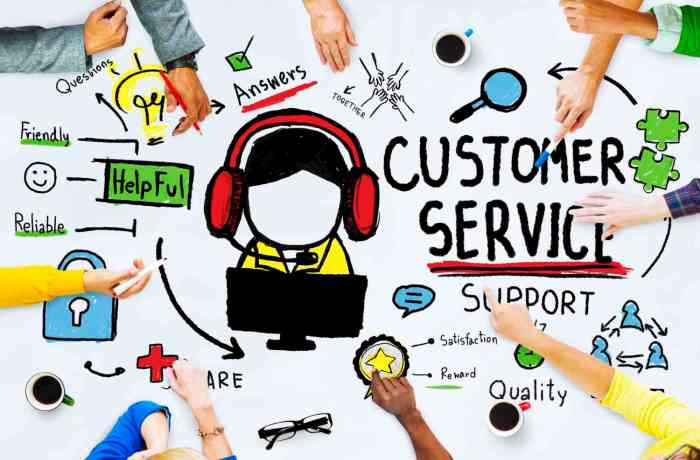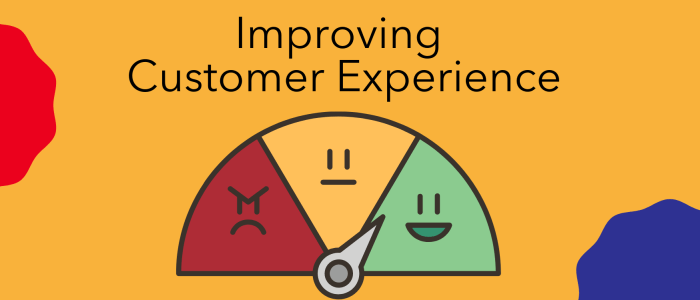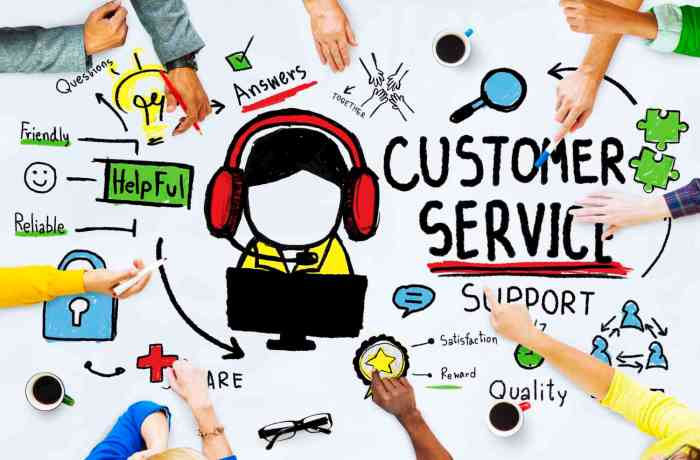
Improve Contact Center Experience: Customer Delight Through Every Interaction
Improve contact center experience – it’s not just a buzzword, it’s the key to customer loyalty and business growth. Today’s consumers expect seamless, personalized interactions, and a contact center that fails to deliver can quickly turn them away. This is where the magic of technology, strategic planning, and a customer-centric culture come together to create a truly exceptional experience.
Imagine a world where customers are greeted by friendly, knowledgeable agents who understand their needs, where self-service options are readily available and efficient, and where issues are resolved quickly and effectively. This is the vision we’re striving for, and it’s achievable by taking a holistic approach to contact center management.
Understanding the Customer Journey

The customer journey within a contact center encompasses all interactions a customer has with the organization, from the initial contact to resolution. Understanding the journey and customer expectations at each touchpoint is crucial for improving customer satisfaction and loyalty.
Identifying Key Touchpoints
Identifying the key touchpoints in the customer journey is essential for understanding the customer experience. These touchpoints represent moments of interaction where customers engage with the contact center. Here are some common touchpoints:
- Initial Contact:This could be through a phone call, email, live chat, or social media. First impressions matter, and a positive initial contact sets the stage for a positive experience.
- Problem Identification:Once the customer has made contact, the agent needs to understand the nature of their issue. This involves active listening and clarifying the customer’s needs.
- Resolution:The ultimate goal is to resolve the customer’s issue. This may involve providing information, troubleshooting a technical problem, or processing a request.
- Closure:After the issue is resolved, the agent should ensure the customer is satisfied and provide any necessary follow-up information. A positive closure reinforces a positive experience.
- Post-Contact:Even after the initial interaction, the journey continues. This could involve follow-up surveys, communication about the resolution, or proactive outreach.
Understanding Customer Expectations at Each Touchpoint
Customer expectations at each touchpoint can vary depending on the nature of the issue, the customer’s individual needs, and their prior experiences. However, some common expectations include:
- Accessibility:Customers expect easy access to the contact center through various channels. This includes convenient operating hours, quick response times, and multiple communication options.
- Efficiency:Customers want their issues resolved promptly and efficiently. This involves minimizing wait times, clear communication, and avoiding unnecessary steps.
- Personalization:Customers appreciate personalized service, where agents understand their needs and provide tailored solutions. This could involve recognizing previous interactions or using customer data to provide relevant information.
- Empowerment:Customers want to feel empowered and in control of the interaction. This involves providing clear options, offering self-service tools, and allowing customers to choose how they want to interact.
Common Pain Points in Contact Centers, Improve contact center experience
While contact centers aim to provide positive experiences, customers often encounter pain points that can negatively impact their satisfaction. These common pain points include:
- Long Wait Times:Excessive wait times on hold or for a response can frustrate customers and lead to dissatisfaction.
- Automated Systems:While automation can be helpful, customers often find it frustrating to navigate complex IVR systems or chatbots that fail to understand their needs.
- Lack of Personalization:When agents don’t seem to understand their needs or provide personalized solutions, customers feel like they are just another number. This can lead to frustration and a sense of being ignored.
- Inefficient Resolution:Customers become frustrated when they have to repeat information, go through multiple steps, or are transferred between agents without their issue being resolved.
- Lack of Follow-up:When customers don’t receive follow-up communication or updates, they feel neglected and their issue is not truly resolved.
Enhancing Customer Interactions: Improve Contact Center Experience
In today’s competitive landscape, businesses are constantly seeking ways to elevate the customer experience and foster lasting relationships. A crucial aspect of this endeavor lies in optimizing customer interactions, which can be significantly enhanced through the strategic integration of technology and personalized communication strategies.
The Role of Technology in Customer Interactions
Technology plays a pivotal role in modernizing customer interactions and streamlining processes. By leveraging advanced tools, contact centers can elevate efficiency, personalize communication, and ultimately improve customer satisfaction.
Just like improving your contact center experience requires understanding your customers’ needs and adapting to their preferences, the same principle applies to navigating the volatile currency markets. Sometimes, currency markets act irrationally, creating unexpected opportunities for those who can identify and capitalize on these deviations.
Learn more about how to spot these opportunities and you might find yourself reaping the rewards of a well-timed investment, just as a well-managed contact center can reap the rewards of satisfied customers.
- Automated Chatbots and Virtual Assistants:These intelligent systems are designed to handle routine inquiries and provide immediate support, freeing up human agents to address more complex issues. Chatbots can provide 24/7 availability, offering a consistent and efficient experience for customers.
- Interactive Voice Response (IVR) Systems:IVR systems enable customers to navigate menus and access information or services without human intervention. These systems can be customized to provide personalized greetings and route callers to the appropriate departments, reducing wait times and improving efficiency.
- Customer Relationship Management (CRM) Systems:CRM systems consolidate customer data, enabling agents to access comprehensive information about each customer’s history, preferences, and interactions. This allows for personalized and context-aware communication, enhancing the overall customer experience.
- Real-Time Analytics:Contact centers can leverage real-time analytics to gain insights into customer behavior, identify trends, and proactively address potential issues. This data-driven approach enables them to optimize operations, improve agent performance, and enhance customer satisfaction.
The Benefits of Self-Service Options
Empowering customers with self-service options can significantly improve their experience, reduce contact center workload, and enhance efficiency.
Improving the contact center experience is all about creating seamless and personalized interactions. But as we move towards more immersive technologies like the metaverse, we need to consider the ethical and regulatory implications. Just like we need to ensure privacy and security in the physical world, the metaverse needs aggressive regulation to prevent exploitation and ensure a safe and equitable experience for everyone.
This is especially crucial for contact centers, as they are often the first point of contact for customers and should be held to the highest standards of ethical conduct.
- Convenience and Accessibility:Self-service options, such as online knowledge bases, FAQs, and mobile apps, provide customers with immediate access to information and solutions, regardless of time or location.
- Faster Resolution Times:Customers can often find answers to their questions or resolve issues independently through self-service portals, eliminating the need for lengthy phone calls or wait times.
- Increased Customer Control:Self-service options provide customers with greater control over their interactions, allowing them to access information and resolve issues at their own pace.
- Reduced Contact Center Volume:By effectively implementing self-service options, contact centers can reduce the volume of incoming calls, freeing up agents to focus on more complex issues.
Personalized Communication Strategies
Personalized communication is essential for building strong customer relationships and enhancing the overall experience. Contact centers can leverage technology and data to deliver tailored interactions that resonate with each customer.
Improving the contact center experience is all about creating a positive and efficient interaction for customers. Think about it – a great customer service experience is like a refreshing summer cocktail, leaving a lasting good impression. For some inspiration on how to make your contact center experience more refreshing, check out this list of 20 easy summer cocktails and appetizers.
Just like a delicious cocktail, a well-designed contact center experience can leave customers feeling satisfied and wanting more.
- Personalized Greetings and Introductions:Using customer data, agents can personalize greetings and introductions, acknowledging the customer’s name, previous interactions, or specific preferences.
- Targeted Offers and Promotions:By analyzing customer data and purchase history, contact centers can tailor offers and promotions to individual customer needs and interests.
- Proactive Communication:Contact centers can leverage data to identify potential issues or opportunities for improvement and proactively reach out to customers with relevant information or support.
- Multi-Channel Communication:Customers prefer to interact with businesses through various channels, such as email, phone, chat, and social media. Contact centers should offer a seamless and consistent experience across all channels, enabling customers to engage with the brand in their preferred way.
Streamlining Operations

Optimizing contact center operations is crucial for enhancing customer experience and driving business growth. Streamlining processes, implementing efficient technologies, and fostering a culture of continuous improvement are key to achieving this goal.
Designing a Workflow for Efficient Handling of Customer Inquiries
A well-designed workflow ensures that customer inquiries are handled promptly, accurately, and efficiently. This involves defining clear steps for each stage of the customer journey, from initial contact to resolution.
- Initial Contact:The initial contact point can be via phone, email, chat, or social media. The workflow should ensure that all inquiries are captured and routed to the appropriate agent or department.
- Issue Identification:The agent should quickly identify the customer’s issue and gather relevant information. This may involve asking clarifying questions or using knowledge base tools to understand the problem.
- Resolution:The agent should attempt to resolve the issue immediately. This may involve providing information, troubleshooting, or escalating the issue to a higher level of support.
- Closure:Once the issue is resolved, the agent should confirm with the customer that they are satisfied and close the ticket. This may involve sending a follow-up email or survey to ensure ongoing satisfaction.
Comparing Contact Center Technologies
Contact center technologies play a crucial role in streamlining operations and enhancing efficiency. The following table compares different technologies and their impact:
| Technology | Impact on Efficiency |
|---|---|
| Customer Relationship Management (CRM) | Centralizes customer data, enabling agents to access relevant information and provide personalized support. |
| Interactive Voice Response (IVR) | Automates initial interactions, reducing wait times and enabling self-service options. |
| Computer Telephony Integration (CTI) | Integrates phone systems with CRM and other applications, streamlining agent workflows and reducing manual tasks. |
| Automatic Call Distribution (ACD) | Distributes calls efficiently to available agents, minimizing wait times and ensuring optimal resource utilization. |
| Call Recording and Monitoring | Provides insights into agent performance, customer interactions, and potential areas for improvement. |
Resolving Customer Issues Within a Contact Center
The following flowchart demonstrates the process of resolving customer issues within a contact center:[Flowchart Image] [Image Description:]The flowchart starts with the customer contacting the contact center. The initial interaction is handled by an IVR system that directs the call to the appropriate agent or department.
The agent identifies the issue and attempts to resolve it. If the issue is complex or requires escalation, it is forwarded to a supervisor or specialist. Once the issue is resolved, the agent closes the ticket and confirms customer satisfaction.
The flowchart also includes feedback loops, allowing customers to provide feedback on their experience and enabling continuous improvement.
Measuring and Improving Performance
Once you have a solid understanding of the customer journey, how to enhance customer interactions, and how to streamline your operations, it’s time to measure and improve your contact center’s performance. This involves tracking key metrics, gathering customer feedback, and analyzing data to identify areas for improvement.
Key Metrics for Measuring Contact Center Performance
To effectively measure contact center performance, you need to track key metrics that reflect customer satisfaction, agent efficiency, and operational effectiveness. Here are some essential metrics to consider:
- First Call Resolution (FCR):This metric measures the percentage of customer issues resolved on the first contact. A high FCR indicates efficient problem-solving and customer satisfaction.
- Average Handle Time (AHT):This metric measures the average time spent on each customer interaction. A lower AHT indicates efficient agent handling of calls, chats, or emails.
- Customer Satisfaction (CSAT):This metric measures customer satisfaction with the contact center experience. It is typically measured through surveys or feedback forms.
- Net Promoter Score (NPS):This metric measures customer loyalty and willingness to recommend the contact center to others. It is typically measured through surveys asking customers how likely they are to recommend the contact center.
- Abandonment Rate:This metric measures the percentage of customers who hang up before reaching an agent. A high abandonment rate indicates potential issues with wait times or service availability.
- Agent Occupancy Rate:This metric measures the percentage of time agents are actively engaged with customers. A high occupancy rate indicates efficient utilization of agent time.
- Average Speed of Answer (ASA):This metric measures the average time customers wait on hold before connecting with an agent. A lower ASA indicates faster service and improved customer experience.
Methods for Collecting Customer Feedback
Collecting customer feedback is crucial for understanding customer needs and identifying areas for improvement. Here are some common methods for gathering feedback:
- Surveys:Surveys are a common way to gather structured feedback from customers. They can be delivered through email, SMS, or online forms. Surveys allow you to ask specific questions about customer satisfaction, experience, and preferences.
- Feedback Forms:Feedback forms provide a structured way for customers to provide feedback on specific interactions or experiences. They can be placed on websites, within contact center systems, or included in email communications.
- Social Media Monitoring:Social media platforms provide valuable insights into customer sentiment and experiences. By monitoring social media channels, you can identify customer complaints, praise, and general opinions about your contact center.
- Customer Reviews:Online review platforms, such as Google My Business and Yelp, allow customers to share their experiences with your contact center. Monitoring these platforms can provide valuable insights into customer perceptions and areas for improvement.
Using Data Analytics to Identify Areas for Improvement
Data analytics plays a vital role in identifying areas for improvement in contact center operations. By analyzing data from various sources, you can gain insights into customer behavior, agent performance, and operational efficiency.
- Identifying Trends:Data analytics can help identify trends in customer behavior, such as peak call times, common issues, and areas of customer dissatisfaction. This information can be used to adjust staffing levels, improve training, and develop new solutions.
- Predictive Analytics:Predictive analytics can help anticipate customer needs and proactively address potential issues. For example, by analyzing historical data, you can predict peak call volumes and adjust staffing accordingly.
- Agent Performance Analysis:Data analytics can be used to track agent performance, identify areas for improvement, and provide targeted training. For example, analyzing call recordings can identify areas where agents could improve their communication skills or product knowledge.
- Operational Efficiency:Data analytics can help optimize contact center operations by identifying areas of inefficiency and waste. For example, analyzing call data can identify opportunities to reduce average handle time or streamline processes.


